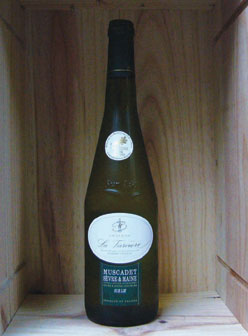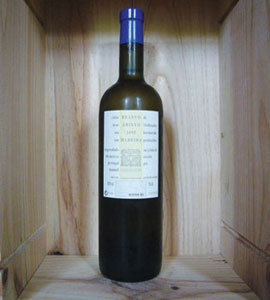Wine Picks
Posted on August 18, 2008 – 8:51 PM | by OldManFoster Chateau La Tarcière
Chateau La Tarcière
Muscadet Sèvre-et-Maine “Sur Lie” 2007
Taylor’s $12.99
Muscadet is a light and refreshing wine by mandate: the French authorities have set a maximum alcohol percentage of 12%. For that reason, I recommend choosing a Muscadet over California Chardonnay during these hot August nights. Muscadet, commonly and incorrectly confused with wines called Muscat, is made from a white grape called Melon de Bourgogne. The grape itself is relatively neutral in character and thus does a good job of expressing terroir — soil, climate and sense of place — rather than varietal character. In other words, if you grew this grape in Lodi, you wouldn’t get the delightfully tangy, salty and mineral wine that is Muscadet. The appellation is located around the mouth of the Loire River in close proximity to the seaside breezes of the Atlantic. It’s impossible not to connect the salty taste of the wine with the sea air endowed upon the grapes as they grow. In addition to the influence of terroir, the wine gains character from the ageing process called sur lie, which means “on the lees.” Lees are the dead yeast cells left over from fermentation. All but the most basic Muscadet is matured with lees contact, and it adds texture and interest to the final wine. The La Tarcière is a classic Muscadet: intensely mineral, briny, racy, textured and light on the tongue. The Muscadet region is full of Atlantic seafood like oysters, mussels, clams, shrimp and lobster, and the wine is the perfect foil for these creatures, especially oysters. Since it isn’t oyster season in August, we enjoyed the La Tarcière with grilled trout, but I’d try it with any seafood, including sushi.
 Campolargo
Campolargo
Bairrada “Branco Arinto” 2005
58 Degrees $24.99
I wouldn’t describe the Campolargo Bairrada “Branco Arinto” as a traditional Portuguese wine because it was fermented and aged in 100% French oak, rather than the more traditional lagar – a shallow cement trough with plenty of room for young men to run around in their bare feet and crush the grapes. The wine is full of personality; an explosion of flavor follows an expressive aroma. There are scents of flowers, pineapples, coconuts, Meyer lemon, and a certain yeasty vinous-ness. It is full and broad on the palate, and the flavor lingers after you swallow. What is typical here is the uniquely tangy acidity, which I consider to be a hallmark of Portuguese wine (I should say northern Portuguese; wines from the southern region of Alentejo are some of the flabbiest I’ve ever tasted). Bairrada is a coastal region stretching between Oporto and Lisbon, specializing in red wines made from the Baga grape; but this lovely white wine, reminiscent of white Rioja, is made from the Arinto grape. Confusingly, this wine comes from a town called Madeira in the mainland region of Bairrada, not the island nation of Madeira known for their fortified wine. In Bairrada, there is frustratingly little support for wine tourism. A better bet is to cram as many meals into the day as possible and order the local wine. The Campolargo would go very well with the Bairrada speciality sandes de leitões, or suckling pig sandwiches.


